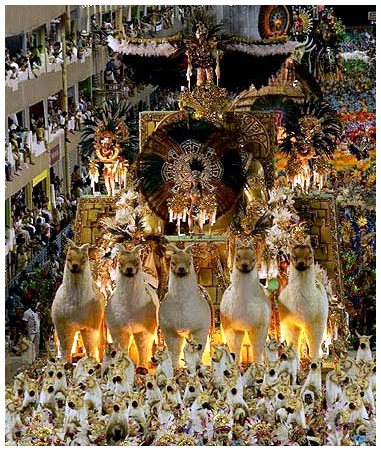Samba music remains a popular and widespread musical genre. Thought to have originated with African slaves who brought it to Brazil, the music has roots in traditional African ceremonies. Enjoyed by people all over the world, the samba has a distinctive sound and vibe in which revelers take pleasure. Fused with contemporary music, samba music became an integral part of the yearly Brazilian Carnaval. This cultural tie samba has with Carnaval makes it a symbol of racial and social harmony.
How Samba Became Popular
Samba became popular as a particular musical style after establishment in the area of Bahia known as Little Africa. Bahian priestesses (tias) performed ceremonies to trigger responses from the gods through song and dance in religious houses there. Participants danced to the beat of African drums and other percussion instruments in these religious ceremonies. People would create and compose samba variations in the religious houses of the Bahian priestesses.

Slaves migrated from Bahia to Rio when slavery ended. They wanted to keep the roots of samba alive, so they started Escolas de Samba (samba schools) there. Blocos (street bands) formed the basis of the first escolas. The schools allowed a creative, artistic way of expression for poor communities. The culture of samba continued in the percussion music and dancers as they celebrated Carnaval throughout their neighborhoods and favelas (shanty towns) close by.
Samba in early 1900’s
In 1917 Ernesto dos Santos presented the Samba Carnavalesco to the public in the song Pelo Telefone (On the Telephone). The 1920s saw a rise in Samba music that made it a favorite for the Brazilian Carnaval. The parades later became contests in which participants competed using the rhythmic dancing methods of the samba and elaborate costumes.
The samba cultural movement became a way of infusing national pride in the region. Samba became recognizable throughout the world and became officially recognized as a musical genre and dance form. The Portuguese and Iberian connection of the samba remained intact, and in 1925 it was imported to Europe where many studied its origins.
Samba in 1930s
In the 1930s the government began subsidizing the escolas de samba that used patriotic themes in their performance. These escolas promoted the ideal of Brazil as a racial democracy with a strong infusion of distinctly “African” samba style. This practice, along with profit-seeking small businesses that used the escolas for tourism, hurt the authenticity of samba for many years.
The pagoda movement of the 1980s revitalized the authenticity of samba. The grassroots movement formed from Rio’s working class suburbs and merged Afro-Brazilian nationalist identity with cultural resistance through aggressive samba lyrics to combat the deterioration of authenticity. The people organized their own carnival parade blocos that had freedom from external corrupting influences.
Samba Today
Due to their efforts, samba continues to delight its listeners with its versatility and cultural influence. Samba continued to evolve over the years and developed into different subgenres. Popular genres developed in this region include Mesemba, Baiano, a Batucada and Carnaval.

Additionally, samba comes in different forms: samba canção, samba-choro, samba carnavalesco, samba enredo and samba de breque. The samba sound pulls together the rhythmic percussion tempo variation with the sounds of pandeiro, reco reco, tamborim and cuica that give it distinct resonance and vibe.
Samba throughout history has delighted its listeners with music and dance expression. It allowed many cultural interchanges. The music changed over time with the mix of the multicultural aspect of Brazilian and African historical roots. The European influence on Samba can also be seen in contemporary forms of salsa.
Comments are closed